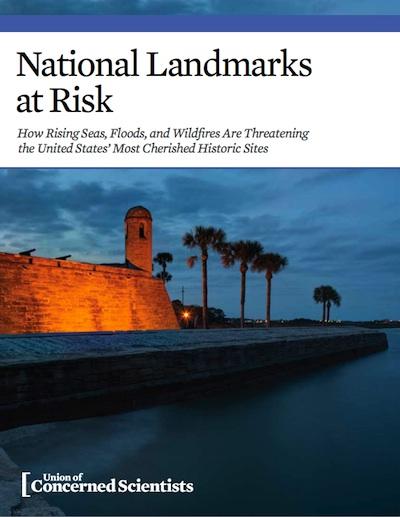Treasures of history, culture, and natural beauty contained within the National Park System are increasingly at risk to the perils of climate change, with flooding and wildfire likely to sweep numerous park sites across the country, according to the Union of Concerned Scientists.
Coastal parks such as Everglades National Park in Florida, the Boston Historic District in Massachusetts, and the Bering Land Bridge National Preserve in Alaska stand to be inundated by rising oceans, while Mesa Verde National Park in Colorado and Bandelier National Monument in New Mexico are at risk of wildfires spurred by the warming, and drying, climate in the Southwest.
The scenarios laid out in National Landmarks at Risk, How Rising Seas, Floods, and Wildfires Are Threatening the United States' Most Cherished Historic Sites are not theoretical predictions, but rather case studies of landmarks that must be protected against the impacts of climate change, the authors write.
Now, nearly 100 years since the founding of the NPS, the agency finds itself forced to develop new ways to protect the natural and cultural resources in its care from the impacts of a changing climate. A recent NPS analysis shows that 96 percent of its land is in areas of observed global warming over the past century and that at least 85 sites have already recorded changes attributable to climate change. Many more have seen consequences such as increases in winter temperature, decreased snowpack, and shifts in precipitation that are consistent with climate change. Another study by NPS scientists has determined that more than 100 national parks are vulnerable to the combined impacts of sea level rise and storm surges.
With that evidence in hand, the Union of Concerned Scientists says it's urgent that the country begin work "to prepare our threatened landmarks to face worsening climate impacts; climate resilience must become a national priority and we must allocate the necessary resources. We must also work to minimize the risks by reducing the carbon emissions that cause climate change. The science is clear that by abating our carbon pollution we can slow the pace of change and thereby lower the risks posed by extreme heat, flooding, and rising seas."



